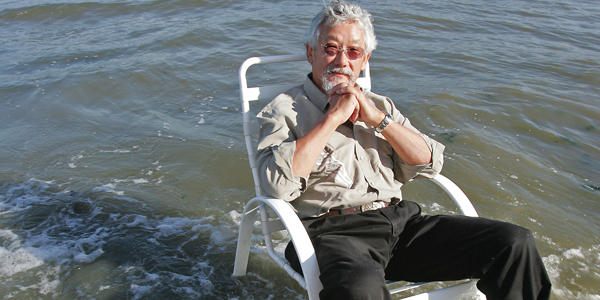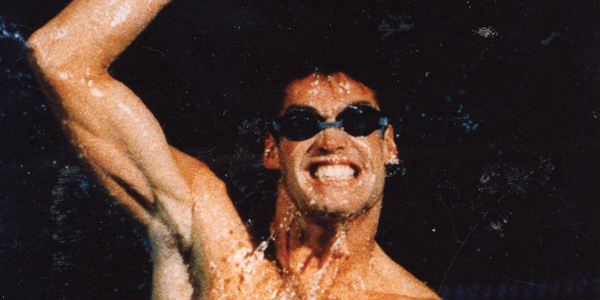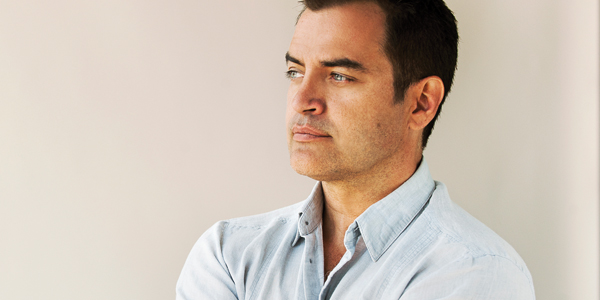 Live a Racing Life
Live a Racing Life
Since the beginning of human existence, we have raced. For early humans it was literally a race to eat and not be eaten. Our ancestors’ days were full of struggles and challenges just to survive. Today we seek comfort, easy challenges, and avoid reaching beyond our comfort levels.
Take a moment, right now, to imagine some of your best successes, when you performed at peak state and delivered results that surprised and fascinated you. It was really about racing. You raced to complete an exam at school, or an athletic event.
We race at a different level than we practice. So why shouldn’t we race our lives forward? Look at people like Richard Branson. He’s living life to extremes in every way. He has over 200 businesses under the Virgin brand and is constantly seeking out new challenges and amazing experiences. There are countless others. Oprah. Bono. Obama’s Race to the White House and the Race to the Moon are all examples of incredible racing achievements.
The race has been a theme throughout my life. The lessons I have learned from each race over the past four decades have culminated in The Business Race Program. Using unique processes, programs, and delivery systems, we are currently racing our clients to a combined total of over $10 billion. It took me a long time to understand the importance and significance of a racing mindset to create the best results in our lives.
On Your Mark!
At age seven, I was instantly hooked by the thrill of downhill skiing and everything about it; the magic of speed, momentum, and challenge. Ski racing soon became a passion. At age 14, I won the Canadian Juvenile Slalom Championships and decided that winning had a clarity and finality that I liked. Being up against the competition and the clock left no room for excuses. Then at age 17, I achieved my biggest goal to date by making the Canadian National Ski Team Development Group. At 18, I switched to the downhill team and raced in my first two World Cups. The next year I was on the National Downhill Team, training and racing in Europe. Again, I’d achieved another important life long goal.
Get Set!
As skiing wound down for me, something happened that changed my life. I was given the chance to accompany my father to the high Arctic on his expedition to search for the world’s northernmost shipwreck, the Breadalbane. We successfully put a man on the deck of the Breadalbane who taught me a valuable lesson about the race. Phil Nuyten radiated a quiet confidence when talking about confronting any challenge. He told me, “softly, softly; go at it with respect, full understanding and work on winning the situation.”
This adventure spawned a thrilling idea for an expedition of my own. Excited and inspired by what my father’s team had accomplished I decided to sail the Northwest Passage as they had originally sailed it 400 years prior, by wind power alone. I envisioned an 18-foot Hobie Cat as the ideal boat. Fortunately, I was among people who knew that encouragement was how to fuel any endeavour. It was just what I needed!
Go! Racing Through the Northwest Passage
My father was a big catalyst in my early efforts to get this project going. One of his friends knew the president of Hobie Cat in California and helped get them excited to sponsor the expedition.
My biggest, quiet fear was that I had never been on a Hobie Cat before they sent one to us. Being a skier, I knew almost nothing about sailing. I’d never captained a boat but I was coachable, which I learned much later was the most important thing to be.
I spent the next 18 months learning and growing the team. Over 130 people signed on to help. Some were world experts in Hobie sailing, extreme exposure diving suits, and Arctic logistics.
Looking deeper into the expedition, I realized that the early explorers had never actually sailed by wind-power alone through the Northwest Passage. All 130 people were excited about doing something that had never been done. I later called this Great Goals: goals that are important to the people who are trying to achieve them.
It took professional photographer, Mike Beedell and I, 100 days to sail the 4000 km Northwest Passage. We were challenged constantly by massive amounts of Arctic ice, ever changing winds, numerous polar bears and our own difference in personalities. I learned that if two people think exactly the same way, one of them isn’t necessary. Mike and I disagreed many times, yet I think the Great Goal that we were trying to achieve was bigger and more focusing than our differences.
National Geographic published my story and Mike’s photographs, and a Rolex print ad was featured in Time, Fortune, and The Economist magazines. At the same time, I had just finished my Honours Business Degree from the University of Western Ontario. This was a case study based degree using mainly Harvard business cases. For the next few years I was meeting, interviewing and then delivering motivational speeches to hundreds of companies. I found this challenging because I had to be “on” for every speech. It reminded me of being in the starting gate of a World Cup Downhill course. Just because I knew how to turn right and left, I still needed to be “on”. It was a race.
Having had the chance to interview several hundred CEOs and senior executives taught me many things. I wanted to be more useful to them. I liked their energy and the challenges they had to meet, not just once, but every month, every quarter and every year. Their race was truly an endurance race.
The Overland Challenge
In the winter of 1994, I was invited to join a team led by the brilliant documentary filmmaker, Richard Creasey. He had an idea that became a $7 million dollar live-action television series called, The Overland Challenge, a journey across Russia. It took us two and half months through the depth of winter to cross the former Soviet Union.
I was fascinated by the compelling human stories that we filmed while visiting the Gulags, the Soviet Camps, where Stalin had sent an estimated 25 million people to die. The human and environmental devastation that I learned about empowered me to demonstrate that humanity has grown and evolved since the time of Stalin.
We had three weeks when the temperature didn’t go above -50 Degrees Celsius. A difficult crossing of the Bering Straits resulted in us sinking a 14 ton amphibious tracked vehicle and we continued by snowmobile through Alaska and back in the vehicles for a sprint to New York City.
Vera was lead translator between the Russians and the English. Her magic was to understand what was being said and translate the context and feeling as well as the words. My lesson was that we are all translators even when speaking the same language. The better we are at interpreting the context and desired result, the better our communication.
Racing Eco-Challenge
Most recently, I’ve raced in the last three Eco-Challenge World Championships. This championship is an all human powered race with co-ed teams of four. If one person quits the race is over for the entire team. Eco-Challenge is considered one of the toughest races ever conceived. You race nonstop, sleeping only when you’re willing to get passed by other teams, over some of the most challenging terrain imaginable. The race takes 7 to 12 days and covers 500 km. 80 teams from 30 countries start, yet fewer than half the teams ever reach the finish line. The course is designed to be an equal opportunity destroyer.
Quitting is Not an Option
My first Eco-Challenge was in Borneo, Malaysia with an all rookie Canadian team. Discovery Channel was covering our team. The heat, leeches, snakes, jungle, and distance all combined to make this a challenging race. Yvonne, our female athlete, fell on her wrist on the fifth day in a brutal section of the jungle. She kept trekking for eighteen hours to get to the next checkpoint to receive medical aid. Her wrist was broken. The doctor recommended that she quit the race. In one of the most courageous moments I’ve seen in any race, she said, “That’s not an option”. I’ve learned from all these races that there is an entire world of possibility on the other side of where most people quit.
For the next five days, Yvonne struggled through the pain to ascend a 200 foot rope climb, followed by a 600 foot rope repel. We relentlessly paddled, trekked, and constantly talked ourselves into not giving up. We crossed the finish line 9 days and 23 hours after we started.
I was so moved by the courage, grace and tenacity of Yvonne in all areas of her life, that I asked her to marry me! Lucky for me, she said “yes”. We now have a three year old son named Nathan.
Of all my races I was most proud of the Eco-Challenge in New Zealand. In only our second World Championship, our Canadian team raced with the top teams in the world, 60,000 feet up and down the magnificent, yet brutally tough Southern Alps. Racing relentlessly for 5 days, 18 hours, we finished 10th in the world.
The Business Race Program
I’ve learned that we humans are capable of so much more than we ask of ourselves. My heroes are those who dream, dare and do; those who step, repeatedly out of the comfort zone in all aspects of their lives; those who are relentless and realize that there is no better time to be an explorer and discoverer than right now!
From my racing experience I’ve evolved Six Race Rules that have proven to accelerate my corporate clients forward in their professional and personal lives. The Business Race Program has increased our clients’ businesses by millions of dollars using the following concepts.
Six Race Rules
1. Great Goals. Pursue goals that are hugely important to the people determined to make them happen. Many people thought our Northwest Passage Expedition was crazy, yet for me and my team it was important. I believe you should have Great Goals in all aspects of your life.
2. Vivid visualization. Things happen twice, first in the theatre of the mind and second in reality. Ski racing was all about the hundreds of times I skied the race course in my mind before the race was run.
3. Gather Greatness. Gather genius in people, technology, ideas and solutions. We ended up with 130 people who helped us stay alive and succeed in sailing the Northwest Passage. Why try to fly solo? Great Goals attract great people. It takes just as long to accomplish small goals as one big one.
4. Encourage Everyone. We learned racing Eco-Challenge that when your teammates deserve encouragement the least, is when they need it the most. I don’t believe confidence is cumulative. I believe we need to protect it and grow it. I grew up ski racing with lots of feedback. I naively thought everyone wanted feedback. Actually, they want encouragement.
5. Course Correct. Your car never goes in a straight line. You are constantly adapting and correcting the course. The most successful people and organizations make more small mistakes that are quickly course corrected towards success. Remember that small positive changes over time create huge results.
6. Momentum Matters. A body in motion stays in motion, while a body at rest stays at rest. It is true in science and in life. If you want something done, ask a busy, determined person. If we ever stopped long enough in an Eco-Challenge race to realize how much our bodies were destroyed, we’d likely never get started again. Seek momentum in all you do.
One final challenge ~ Race your life forward.
Race On.





